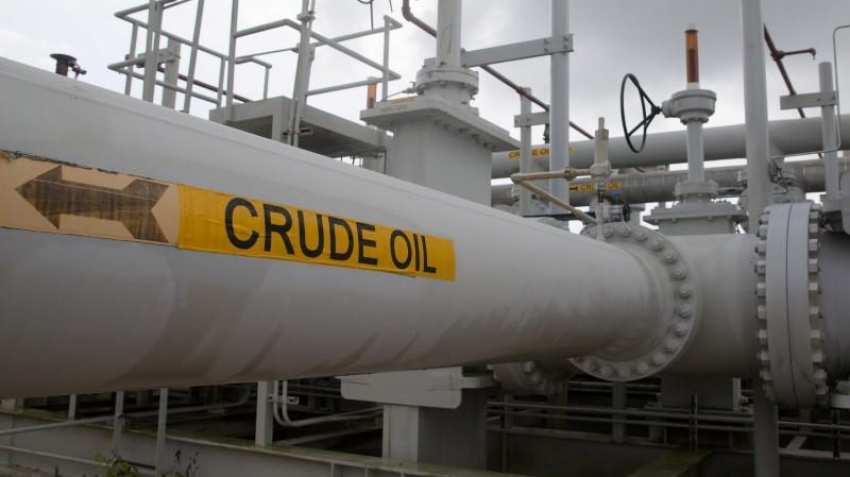Oil prices fell 2 percent after President Trump urges OPEC not to cut supply
Top crude exporter Saudi Arabia has watched with alarm how supply has started to outpace consumption, fearing a repeat of a glut that brought a price crash in 2014. Saudi Energy Minister Khalid al-Falih said on Monday the Organization of the Petroleum Exporting Countries agreed there was a need to cut oil supply next year by around 1 million barrels per day (bpd) from October levels to prevent oversupply.

Oil prices fell more than 2 percent on Tuesday after U.S. President Donald Trump put pressure on OPEC not to cut supply to prop up the market. Brent dropped $1.97 a barrel, or 2.8 percent, to a low of $68.15 before recovering to around $68.52, down $1.60, by 1420 GMT. US light crude was $1.35 lower at $58.48.
Both crude benchmarks have fallen more than 20 percent since peaking at four-year highs in early October.
"The market now increasingly looks concerned about the prospect of too much supply," said Norbert Ruecker, head of macro and commodity research at Swiss bank Julius Baer.
"Hedge funds and other speculative (investors) have swiftly changed from the long to the short side."
Top crude exporter Saudi Arabia has watched with alarm how supply has started to outpace consumption, fearing a repeat of a glut that brought a price crash in 2014.
Saudi Energy Minister Khalid al-Falih said on Monday the Organization of the Petroleum Exporting Countries agreed there was a need to cut oil supply next year by around 1 million barrels per day (bpd) from October levels to prevent oversupply.
But Trump has made it clear he wants oil prices to fall. "Hopefully, Saudi Arabia and OPEC will not be cutting oil production. Oil prices should be much lower based on supply!" the president said in a Twitter post on Monday.
That led to a sharp price drop on Monday and the sell-off continued into Tuesday. "This tweet certainly did not help prices," ING commodities strategist Warren Patterson said.
The dollar also put pressure on oil, hovering near 16-month highs, making crude more expensive for importers using other currencies.
Extraction from shale fields has propelled U.S. oil production to record highs this year with crude output now at 11.6 million bpd, helping make the United States self-sufficient in energy.
Merrill Lynch says U.S. crude production will break through 12 million bpd in 2019, supporting oil exports to the rest of the world.
Oil production is not just rising in the United States. Kazakhstan said on Tuesday its oil output rose 4.8 percent to 74.5 million tonnes in the first 10 months of 2018, equivalent to 1.82 million bpd.
Dutch bank ING said abundant supply and the threat of economic slowdown meant "cuts over 2019 are unavoidable". "The market will see a sizeable surplus at least over the first half of 2019," ING said.
Get Latest Business News, Stock Market Updates and Videos; Check your tax outgo through Income Tax Calculator and save money through our Personal Finance coverage. Check Business Breaking News Live on Zee Business Twitter and Facebook. Subscribe on YouTube.
RECOMMENDED STORIES

SBI 444-day FD vs PNB 400-day FD: Here's what general and senior citizens will get in maturity on Rs 3.5 lakh and 7 lakh investments in special FDs?

Looking for short term investment ideas? Analysts suggest buying these 2 stocks for potential gain; check targets

Rs 3,500 Monthly SIP for 35 years vs Rs 35,000 Monthly SIP for 16 Years: Which can give you higher corpus in long term? See calculations
08:29 PM IST









 Petrol prices at lowest level in 2018 at Rs 69.74 today, diesel also becomes cheaper
Petrol prices at lowest level in 2018 at Rs 69.74 today, diesel also becomes cheaper  Worry for India, these factors could pin down exports growth
Worry for India, these factors could pin down exports growth  Global oil on boil: Brent crude stays near $79 per barrel
Global oil on boil: Brent crude stays near $79 per barrel Rupee wobbles on gushing trade deficit woes amid rising crude
Rupee wobbles on gushing trade deficit woes amid rising crude